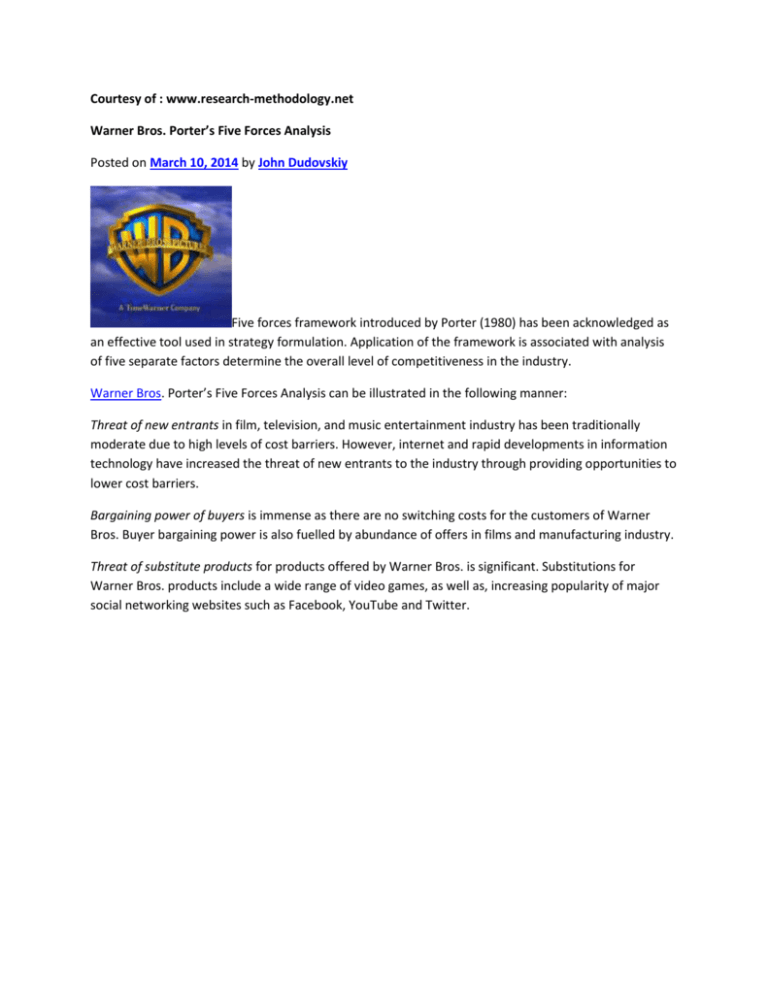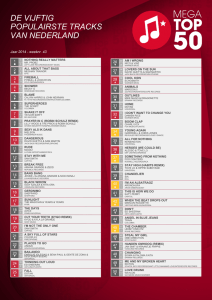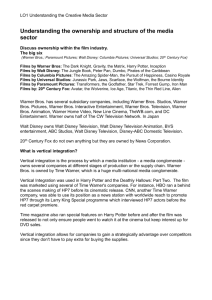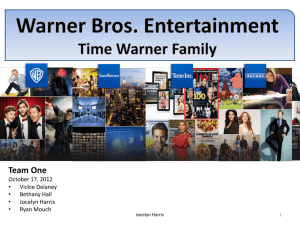Warner Bros. Analysis: Porter's Five Forces, SWOT, PESTEL
advertisement

Courtesy of : www.research-methodology.net Warner Bros. Porter’s Five Forces Analysis Posted on March 10, 2014 by John Dudovskiy Five forces framework introduced by Porter (1980) has been acknowledged as an effective tool used in strategy formulation. Application of the framework is associated with analysis of five separate factors determine the overall level of competitiveness in the industry. Warner Bros. Porter’s Five Forces Analysis can be illustrated in the following manner: Threat of new entrants in film, television, and music entertainment industry has been traditionally moderate due to high levels of cost barriers. However, internet and rapid developments in information technology have increased the threat of new entrants to the industry through providing opportunities to lower cost barriers. Bargaining power of buyers is immense as there are no switching costs for the customers of Warner Bros. Buyer bargaining power is also fuelled by abundance of offers in films and manufacturing industry. Threat of substitute products for products offered by Warner Bros. is significant. Substitutions for Warner Bros. products include a wide range of video games, as well as, increasing popularity of major social networking websites such as Facebook, YouTube and Twitter. Bargaining power of suppliers is greater in films and entertainment industry compared to many other industries. Due to the unique nature of this industry famous actors can be classified as suppliers at the same time as serving as human resources. According to this approach, the success of sequels of famous Warner Bros. franchises such as Lord of the Rings, Batman, Harry Potter and Hangover is possible only through attracting A-list actors and actresses who have great bargaining power. Rivalry among existing competitors in global entertainment industry is intense and major companies competing in the industry along with Warner Bros. include Paramount Pictures Corporation, The Walt Disney Studios, Fox Filmed Industries and others. This portal also contains SWOT and PESTEL analyses for Warner Bros. Warner Bros. SWOT Analysis Posted on March 6, 2014 by John Dudovskiy Strengths Warner Bros. has a solid financial position with USD 12 billion revenues generated during the year of 2012 alone with more than USD 1.2 billion operating income (Annual Report, 2012). Moreover, Warner Bros. has produced a series of successful franchises such as The Lord of the Rings, Batman, Harry Potter and Hangover that have immense contributions to the level of profitability of the company. Knowledge and experiences associated with the production of these successful franchises can be specified as strengths of Warner Bros. The agreement of Warner Bros. with Netflix Inc. that allows the company to stream previous sessions of shows’ series shown on CW network can be added to the list of its strengths due to the associated potentials for profit maximisation. Weaknesses Overdependence of Warner Bros. on the home market in the US is its major weakness in global competition. US government debt issues and implications of this issue on consumer spending patterns in the future increases the level of urgency of this weakness on long-term perspectives. Moreover, recent damage to Warner Bros. brand image for being used for infringing Cat Meme Copyright can be listed as weakness for the company that has to be addressed by senior level management. Opportunities There is an attractive profit maximisation opportunity for Warner Bros. through introducing new instalments to its successful franchises such as The Lord of the Rings, Batman, Harry Potter and Hangover. Expansion of digital distribution capabilities represents opportunity for Warner Bros. to strengthen its role as a leader of technological changes in the industry. Moreover, the levels of Warner Bros. revenues can be further increased through higher integration of product placement marketing strategy. Threats Business threats faced by Warner Bros. are diverse and they primarily include further decline of the sales of DVDs due to the maturation of DVD format of entertainment, challenging economic conditions, and piracy. Furthermore, the threat of loosing more revenues because of piracy should not be underestimated, because despite attempts for a numbers of years effective solutions have not been found yet for this problem. Declining popularity of US television programs represent considerable threat to Warner Bros. revenues for long-term perspective and increasing levels of operational costs are additional challenges to be addressed by the company. Warner Bros. PESTEL Analysis Posted on March 7, 2014 by John Dudovskiy PESTEL analysis can be explained as “a checklist to analyse the political, economic, socio-cultural, technological, environmental and legal aspects of the environment” (Rao et al., 2009, p.115). The framework assists with analysis of the impact of each of these individual aspects of external environment to be used in decision-making by senior management. PESTEL analysis for Warner Bros. is illustrated on the following table: Political Economical Political situation in the US and foreign markets Impact of US foreign trade deficit issue Censorship on media and entertainment in emerging markets Resign costs of advertising Level of US unemployment Inflation rate in the US Changes in the US taxation system Impacts of lobbying groups in film and entertainment industry Effects of industry pressure groups Social Technological Value changes in the US and other market Increasing popularity of 3D technology Increasing influence of internet on social life Maturation of films in DVD format Changes in demographic challenges Increasing importance of work-life balance Emergence of innovative platforms to consume entertainment products Acceptance of same-sex marriages by increasing numbers of states in the US Ecological Problems associated with global warming Rising environmental concern of people globally Increasing importance of eco-tourism and related issues Increasing importance of corporate social responsibility (CSR) Warner Bros. PESTEL Analysis Increasing integration of IT in various stages of film production Technological breakthroughs in film production Legal Licensing issues with other organisations in the industry Problems related to intellectual property Legal barriers to enter emerging markets Changes in the US rules and regulations in relation to films and entertainment industry.







